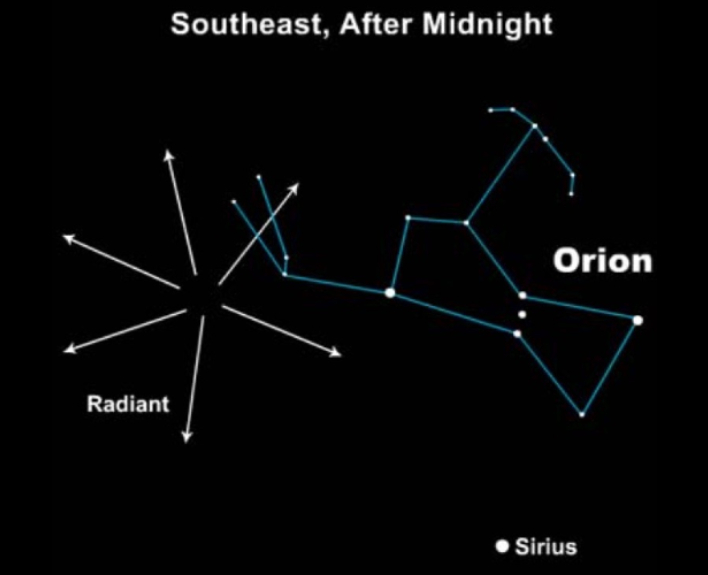Halley's Comet Orionid Meteor Shower Will Dazzle Stargazers This Week, How To Catch It

The Orionid meteor shower is a product of the inbound leg of Halley's Comet. The Orionids get their name from the radiant point from which they appear to originate from, constellation Orion the Hunter. You may have glimpsed a few shooting stars from the Orionids already, but the peak is expected to be later this week.
The Orionids are travelling in one direction, as the Earth moves in the opposite. The combined speeds ultimately produce fast-moving meteors. While these falling stars may fly across the sky at a rapid pace of about 41 miles (66 km) per second, they also leave trails of ionized gas. These trails, called trains, last for a few seconds after the meteor has disappeared, and add to the overall viewing experience.

Image Credit: EarthSky
The Orionids can actually be viewed until late November, but this week is expected to be the height. If you are wanting to catch the Orionid meteor shower at its peak, it is predicted to occur on October 21, 2022, in the early morning hours, as the moon will be a slim crescent. The meteors will appear to originate from Orion the Hunter, but you should be able to see them across the entire sky.
As with any meteor shower, you will want to find a location away from any city light pollution for the best viewing experience. So, grab a blanket and a friend, and catch a show in the sky later this week.

